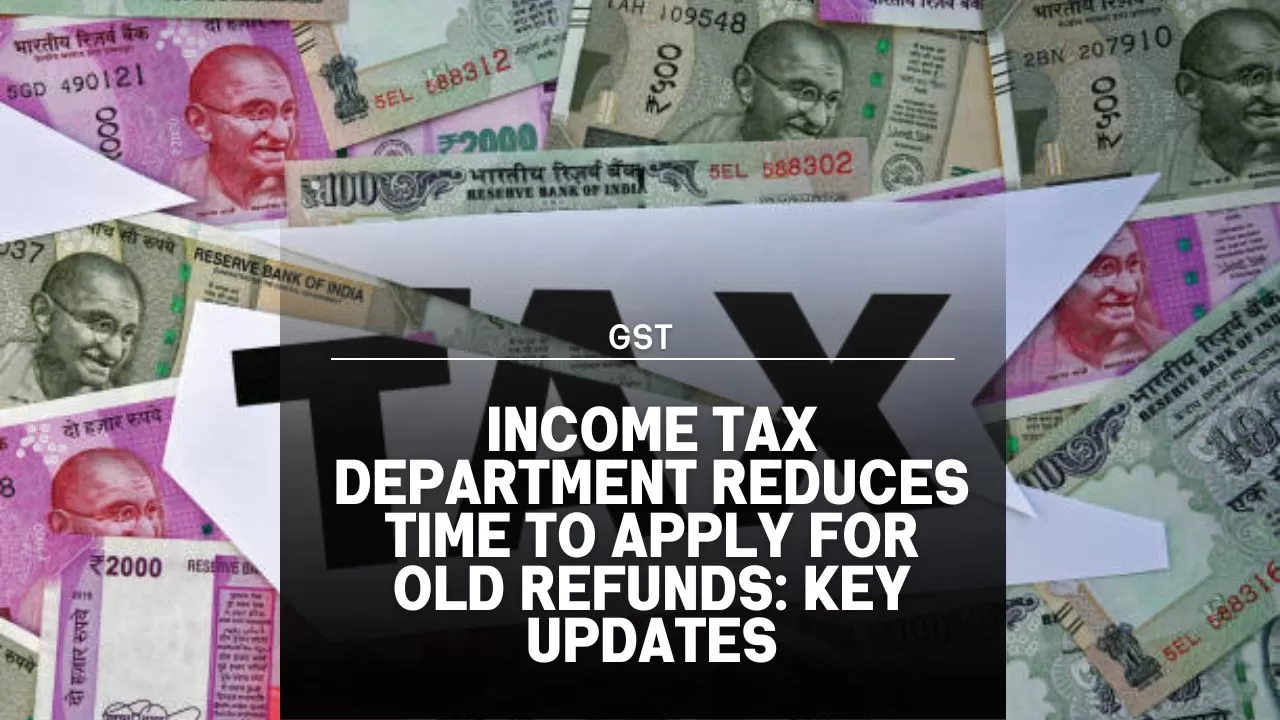Income Tax Refund Time Limit 2024: Some significant changes in the claims for tax refunds have been made by the Indian Income Tax Department from the taxpayer point of view reducing the time span for requesting for older income tax refunds. As part of these changes the tax administration will be more efficient, outstanding refund requests will be dealt with and the culture of timely payment by taxpayers will be fostered.
The Time Limit to Apply for an O/R Refund Has Been Decreased
New rules have been published by the Central Board of Direct Taxes (CBDT) on October 1, 2024 which clearly reduces the time limit for seeking for condonation for delay in filing the Income Tax Returns (ITRs). This applies to all taxpayers who were able to submit an application for refund up to five years from the end of that financial year which the ITR was due against the previous policy which provided a time limit of six years.
What Does This Mean for Taxpayers?
The reduced timeframe though makes it clear that returns and refund claims should be emplaced within the stipulated period. Noncompliance with this could lead to the loss of the refund and now more than ever it is important for the taxpayers to keep comprehensive records and follow the timelines provided.
The new rules apply under section 119(2)(b) of the Income Tax Act, 1961 which applies to payment of all levies including ITR’s and subsequent claims and specifies the terms and which the Deputy Commissioner has discretion to apply for late tax payments.
The other information what taxpayers need to know includes the following:
- Late Electronic Verification: You may apply for condonation in cases where you are unable to verify ITR after 30 days of electronically filing it as long as valid reasons are given for the failure to do so.
- Late Filing of ITR: Applicants who fail or miss the annual due date (most times July 31) may still apply for condonation, but violators may be sanctioned based on their waged income and how long they took in filing their tax returns.
Procedure of Applying for Delay Condonation
Applications for condonation are to be done by taxpayers in form of an application through the e-filing portal. It is the income tax authorities who ultimately approve or disapprove such applications as they are the ones who investigate the reasons provided for the delay.
Main Features of the New Circular
- Condonation Guidelines: The circular sets out the time frame in which the claim may be made and the persons receiving the inquiries are given proper direction on how they should handle such inquiries.
- Authority Levels: Since each income tax authority receives specific limits depending on claim amounts, this will promote efficiency when processing claims.
- Court-Ordered Refunds: In the case of refund orders due to court order, the five year period does not include the time in which the court case was being tried.
The condonation applications should be lodged within six months from the date of the court order or from the closure of the accounting year, whichever is earlier.
- Supplementary Refund Claims: Applications for supplemental refunds, distinct from the above types of claims, can be so long as these claims will not draw any interest.
Key Benefits for Taxpayers
- Reclaiming Unused Refunds: Applications for repayment of the taxes made in excess, being self-assessment tax, advance tax or TDS, can be made.
- Loss Carry-Forward: In addition to that, losses can also be carried forward to defer tax payments, so long as the application for condonation is duly granted.
Government’s Objective
This policy change demonstrates government’s intention to improve operational effectiveness and compliance. Through the reduction of the time period, the aim is to:
- Enhance tax collection.
- Make it easier for taxpayers to submit returns on time.
- Reduce the time taken to clear historical refund requests.
Taxpayers are now recommended to change the way they manage their tax records and utilize the assistance of tax experts where necessary.
| Particulars | Previous Limit | New Limit |
|---|---|---|
| Time for Condonation Application | 6 years | 5 years |
| Court-Ordered Refund Applications | 6 months (from order date) | No change |
| Supplementary Refund Claims | Permissible | Permissible (No Interest) |
Conclusion
This will require taxpayers to be more vigilant to file their returns and complete the refund claims within the set period. Proper documentation, adherence to timelines will help target frustration and remain compliant to the latest tax rules.
There is a shorter period for claiming refunds which clearly establishes the government’s efforts aimed at making it easy for taxpayers and the administration – ultimately, that is why the processes exist.
